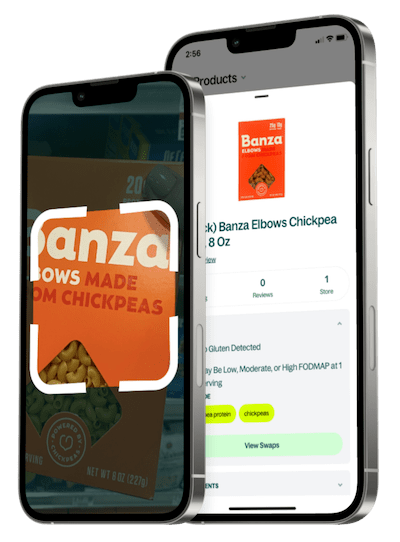Is Eat Real Kale, Tomato & Spinach Sharing Veggie Straws Low FODMAP?

Description
Eat Real Kale Tomato Spinach Sharing Veggie Straws are a delicious and nutritious snack made from real and natural ingredients. The combination of potato, kale, spinach, and tomato creates a unique flavor that people appreciate. With 30 percent less fat than potato crisps, these veggie straws offer a healthier alternative. Conveniently available in 45 g packages, they are perfect for sharing or enjoying on your own. The positive feedback from people who have tried these veggie straws speaks to their quality and taste. Overall, Eat Real Kale Tomato Spinach Sharing Veggie Straws provide a satisfying snack option that is both flavorful and better for you.

Description
Eat Real Kale Tomato Spinach Sharing Veggie Straws are a delicious and nutritious snack made from real and natural ingredients. The combination of potato, kale, spinach, and tomato creates a unique flavor that people appreciate. With 30 percent less fat than potato crisps, these veggie straws offer a healthier alternative. Conveniently available in 45 g packages, they are perfect for sharing or enjoying on your own. The positive feedback from people who have tried these veggie straws speaks to their quality and taste. Overall, Eat Real Kale Tomato Spinach Sharing Veggie Straws provide a satisfying snack option that is both flavorful and better for you.
Ingredients
Potato Starch, Dehydrated Potato (30%), Rapeseed Oil, Salt, Tomato Powder (0.4%), Kale Powder (0.4%), Spinach Powder (0.4%), Red Beet (0.3%), Firming Agent (Calcium Chloride), Turmeric
What is a Low FODMAP diet?
A Low FODMAP diet limits foods high in certain short-chain carbohydrates (FODMAPs) that can be poorly absorbed in the gut. These include specific sugars found in foods like onions, garlic, beans, apples, and wheat. It's commonly followed by people with irritable bowel syndrome (IBS) or other digestive sensitivities to reduce bloating, gas, and discomfort. The diet typically involves an elimination phase, followed by gradual reintroduction to identify personal triggers. When followed carefully, often with a dietitian's guidance, a Low FODMAP diet can help manage symptoms while maintaining a balanced and varied intake of nutrients.
Similar Products
Sensible Portions Garden Veggie Straws® Gluten Free Sea Salt -- 7 oz
Sensible Portion Garden Veggie Straws Sea Salt
Sensible Portions Garden Veggie Straws Vegetable and Potato Snack, Sea Salt
Trader Joe's Veggie Sticks Puffed Potato Snacks Flavored With Spinach & Tomato
Sensible Portions Zesty Ranch Garden Veggie Straws, 14 Ounce Bag


